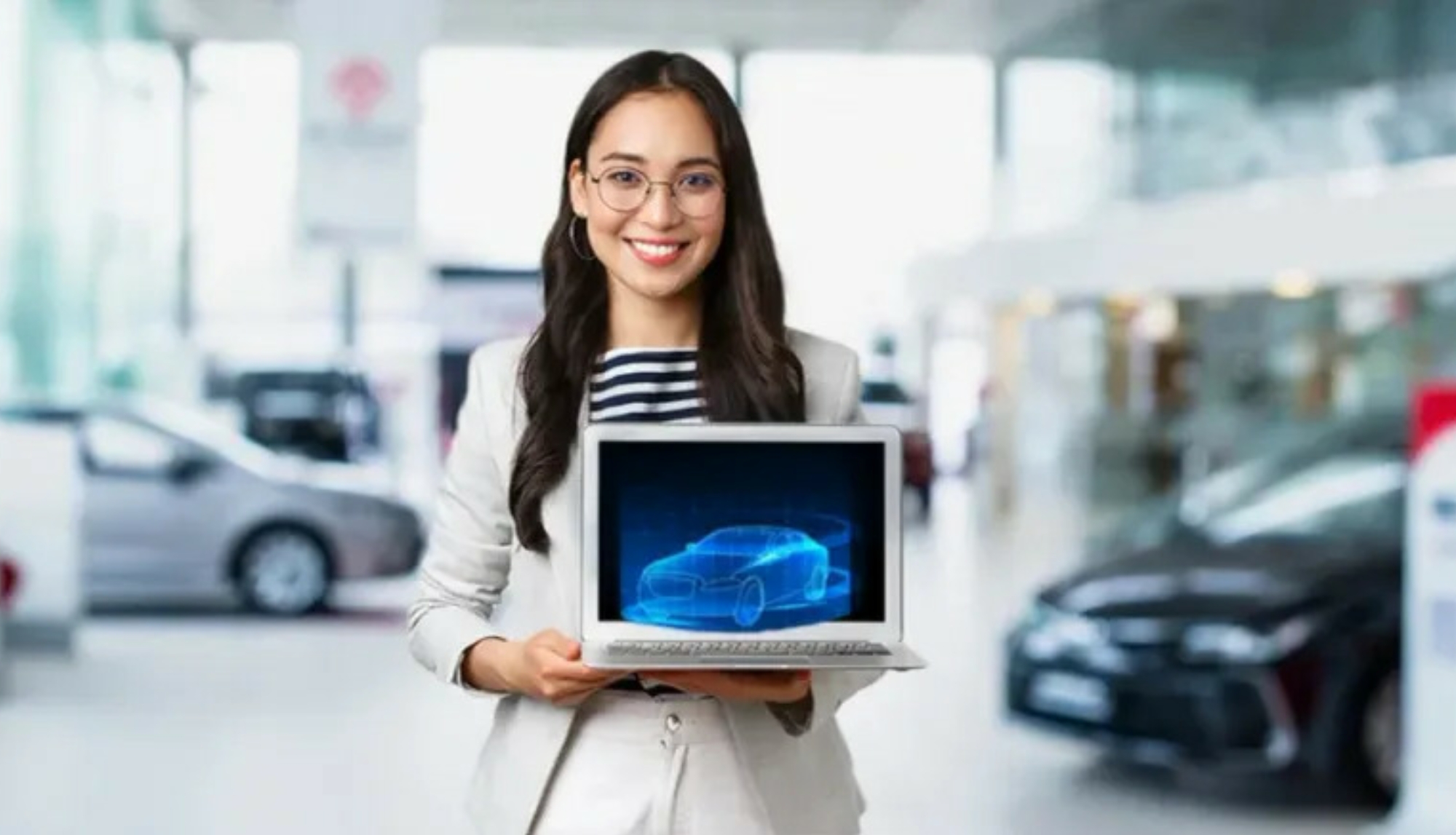
E-tailers Vs. Retailers: Winning The Race For Customer Loyalty In The Auto Parts Industry
The Landscape
In the fast-paced world of auto parts supply, two primary players dominate the market: e-tailers and traditional retailers. As consumers increasingly turn to online shopping for convenience, e-tailers have gained tremendous ground in capturing the loyalty of customers. Yet, the brick-and-mortar experience remains essential for many car enthusiasts and DIY mechanics. This article explores the strategies each side employs to win customer loyalty in a changing landscape, highlighting both the highs and lows they encounter along the way.
E-tailers: Convenience and Variety at Your Fingertips
E-tailers, such as RockAuto and AutoZone.com, cater to the modern shopper’s desire for ease and efficiency. The convenience of browsing vast inventories from the comfort of home, combined with the ability to compare prices in real-time, has made online shopping a go-to option for many. These platforms can often offer specialized parts for unique vehicles or hard-to-find components that may not be available in a local store. Furthermore, e-tailers frequently provide user-friendly interfaces, detailed product descriptions, and customer reviews that can educate novice mechanics and seasoned pros alike. They leverage technology and data analytics to tailor recommendations, ensuring that customers find exactly what they need when they need it.
Retailers: The Human Touch
However, brick-and-mortar retailers offer something that e-tailers struggle to replicate: personal interaction. Auto parts stores like AutoZone and O’Reilly Auto Parts take pride in having knowledgeable staff who can provide tailored advice and hands-on support to customers. Many shoppers appreciate the ability to physically inspect parts, engage with personnel who can troubleshoot issues, and even receive assistance with installation. This human touch fosters trust and rapport, forging stronger emotional connections that can lead to lasting brand loyalty. When a customer walks into a store and feels welcomed, they are more likely to return for future purchases.
The Balancing Act: Price vs. Service
One of the most critical battlegrounds for customer loyalty in the auto parts industry is the delicate balance between price and service. E-tailers often have lower prices due to reduced overhead costs, but a seemingly cheap part can come at a price if the service side is lacking. Customers may save money, but they may also experience delays in shipping or receive poor after-sales support. On the other hand, retailers may charge slightly higher prices, but the added value of in-store expertise and immediate product availability can justify that cost. Ultimately, consumers are faced with a dilemma: Do they prioritize cost savings or the benefits of personalized service and instant access?
Adopting Omnichannel Strategies
To thrive in this competitive environment, both e-tailers and traditional retailers are adopting omnichannel strategies. E-tailers are investing in expanded customer service lines, faster shipping options, and local inventory to fulfill orders quickly. Meanwhile, brick-and-mortar stores are enhancing their online presence, allowing customers to order ahead and pick up in-store, bridging the gap between digital and physical shopping experiences. Companies that can effectively integrate both channels stand to capture a broader audience and provide customers with the seamless shopping experience they crave.
Building Lasting Relationships
In the end, winning customer loyalty in the auto parts industry requires more than just sales tactics; it requires building genuine relationships. Both e-tailers and retailers must listen to their customers, understand their needs, and tailor their offerings accordingly. Whether it’s through personalized shopping recommendations or fostering a community-like atmosphere in-store, the key lies in valuing customers as individuals with unique automotive needs. By understanding that loyalty is built on trust, transparency, and meaningful interactions, both e-tailers and traditional retailers can secure their place in this competitive landscape. Ultimately, the race for customer loyalty may not have a clear winner, as both sides continue to evolve and adapt in response to changing consumer preferences.
Omnichannel Strategies: Blending Online And In-store For Maximum Impact In Auto Retail

Setting the Scene: The Evolving Landscape of Auto Retail
The world of auto retail is shifting faster than ever before. In an age where consumers are empowered with information at their fingertips, dealerships are faced with the challenge of meeting customers’ increasingly sophisticated shopping habits. Gone are the days when a spontaneous visit to a dealership would suffice. Today’s car buyers often research extensively online, comparing models, prices, and reviews before even stepping foot on a lot. In this climate, adopting omnichannel strategies has become essential for auto retailers to engage with customers effectively—blending the online and in-store experience into one seamless journey.
Understanding the Omnichannel Customer Journey
To create a robust omnichannel strategy, it’s crucial to first understand the customer journey. Consumers often oscillate between online research and in-store visits, driven by their need for information and tangibility. They may begin their search on a dealer website, scroll through a social media ad, read reviews on a third-party site, and finally decide to visit the dealership to test drive the car. Each touchpoint presents a rich opportunity for dealerships to bond with potential buyers. By tailoring marketing efforts to meet customers where they are—whether that’s in digital spaces or at the dealership—auto retailers can forge deeper connections and drive conversions.
Crafting a Unified Brand Experience
Creating a cohesive brand experience across various channels is at the heart of effective omnichannel strategies. This involves syncing online platforms with the physical dealership environment to ensure that customers receive consistent messaging and engagement. Imagine walking into a dealership and finding all the information, promotions, and car models that you had previously browsed online present at the touch of a button on a kiosk. Moreover, leveraging customer data allows retailers to personalize the experience further—offering buyers tailored recommendations and special promotions based on their online behavior, thus making them feel recognized and valued.
Embracing Technology: Tools of the Trade
The implementation of technology is a game changer in the world of omnichannel auto retail. Tools such as Customer Relationship Management (CRM) systems, AI chatbots, and integrated marketing platforms can streamline processes and facilitate communication between online and in-store environments. For instance, chatbots can engage customers 24/7 on a dealership’s website, answering questions and booking test drives, while CRM systems track customer interactions, allowing sales teams to personalize their approach based on previous engagements. By integrating these technologies, auto retailers can work smarter, not harder—cultivating a more enriched, smooth experience for customers.
Training Staff for a Seamless Experience
While technology plays a major role, it’s equally important to invest in training staff on delivering a seamless omnichannel experience. Employees should be well-versed in both online and offline systems, enabling them to assist customers who may have questions generated from their online interactions. Store associates must cultivate an attitude of understanding and adaptability, being capable of shifting from tech-savvy digital interactions to face-to-face engagements. When staff can engage knowledgeably about online promotions, financing options, and customer feedback, it builds trust and enhances the overall experience for car buyers.
Measuring Success: Adapting for Continuous Improvement
Finally, it’s crucial for auto retailers to continuously measure the success of their omnichannel strategies. Key performance indicators (KPIs) such as conversion rates, customer satisfaction scores, and online engagement metrics should be regularly assessed and analyzed. Customer feedback forms can be invaluable in this process, providing insights into areas of improvement. By creating a culture of adaptability and responsiveness, dealerships can refine their strategies, ensuring they resonate effectively with consumers. In doing so, retailers not only maximize their impact but also secure loyal customers who will return for future purchases—a win-win in the evolving world of auto retail.
The Digital Shift: How E-tailers Are Redefining Auto Parts Sales"

The Evolution of Auto Parts Retail
In a world where convenience reigns supreme, the retail landscape is rapidly transforming. Traditional auto parts stores, once the go-to choice for car enthusiasts and everyday drivers alike, are facing a fundamental shift. E-tailers, or online retailers, are taking the helm, leveraging technology to offer an array of products at customers’ fingertips. This transformation is not just about convenience; it’s about redefining the entire experience of purchasing auto parts, making it more accessible and personalized. From the comfort of our homes, we can now browse thousands of parts, read reviews, and find exactly what we need—often at competitive prices.
Bridging the Knowledge Gap
One of the most significant advantages e-tailers have over traditional auto parts retailers is their ability to provide comprehensive product information and educational resources. Many online platforms not only showcase product listings but also feature in-depth guides, tutorial videos, and customer reviews. This wealth of information helps demystify the auto repair process for the average consumer, who might feel overwhelmed when facing a repair issue. E-tailers are stepping in to build a bridge between the novice car owner and the complex world of auto parts, enabling even the least mechanically inclined among us to tackle DIY projects with confidence.
Personalized Shopping Experiences
Today’s e-tailers are not just about making parts available; they are also focused on delivering personalized shopping experiences. Utilizing advanced algorithms and data analytics, these online retailers can recommend products based on a user’s browsing history, purchase patterns, and even specific vehicle models. Imagine browsing for brake pads and receiving suggestions for compatible rotors and tools—all tailored to your vehicle’s make and model. This level of personalization enhances the shopping experience, making it feel less like a transaction and more like a curated journey tailored just for you.
Embracing Sustainability
As the global conversation around sustainability intensifies, e-tailers are also positioning themselves as champions of eco-friendly practices within the auto parts industry. By optimizing supply chains and reducing the need for physical storefronts, online retailers can minimize their carbon footprints. Additionally, many e-tailers commit to using sustainable packaging and offering refurbished or aftermarket auto parts, appealing to environmentally conscious consumers. As they introduce green practices, they also educate their customers—encouraging a shift towards more sustainable automotive choices and repairs.
Digital Communities and Customer Engagement
Another remarkable facet of this digital shift is the emergence of vibrant online communities. E-tailers often cultivate platforms for enthusiasts and DIY mechanics to share their experiences, ask questions, and celebrate successes. Social media groups, forums, and even live Q&A sessions with experts have made it possible for consumers to connect with one another, forging a sense of camaraderie and support that traditional retailers often lack. This sense of community not only empowers consumers but also enhances customer loyalty, as people feel a part of something larger than just a mere transaction.
Looking Ahead: The Future of Auto Parts Sales
As we peek into the future of auto parts sales, it’s evident that the digital shift is here to stay. E-tailers will continue to innovate, utilizing cutting-edge technologies like augmented reality (AR) for virtual fittings and artificial intelligence (AI) for even smarter, more personalized recommendations. This evolving landscape promises to keep evolving, shaping how we buy and sell auto parts. For consumers, this transition represents an exciting opportunity to engage with the automotive world in ways that were once unimaginable. Whether you’re a seasoned gearhead or a first-time car owner, the future of auto parts sales is poised to offer an experience that is more engaging, informative, and connected than ever before.





